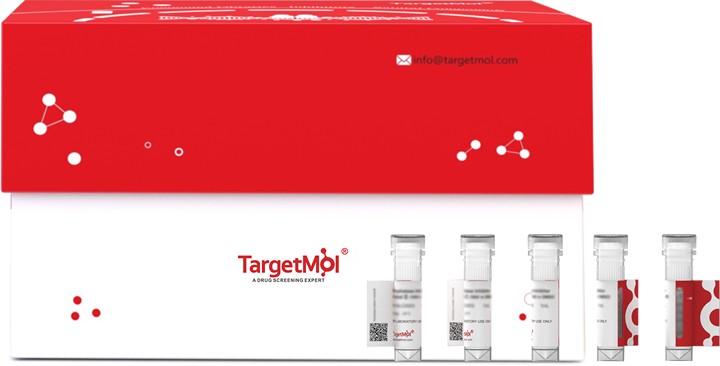- Remove All
 Your shopping cart is currently empty
Your shopping cart is currently empty
CAMKV Protein, Human, Recombinant (His & GST)
CaM kinase-like vesicle-associated protein, also known as CAMKV, is a peripheral membrane protein and Cytoplasmic vesicle membrane protein which belongs to theprotein kinase superfamily and CAMK Ser/Thr protein kinase family. CAMKV contains oneprotein kinase domain. It is predominantly observed in association with the plasma membrane of soma and in neurites, both axons and dendrites. CAMKV may be associated with vesicular structures. It does not appear to have detectable kinase activity. Protein kinases are a group of enzymes that move a phosphate group onto proteins, in a process called phosphorylation. Protein kinases function as an on/off switch for many cellular processes, including metabolism, transcription, cell cycle progression, cytoskeletal rearrangement and cell movement, apoptosis, and differentiation. They also function in embryonic development, physiological responses, and in the nervous and immune system. Abnormal phosphorylation causes many human diseases, including cancer, and drugs that affect phosphorylation can treat those diseases. The protein kinase domain is a structurally conserved protein domain containing the catalytic function of protein kinases. Protein kinases play a role in a mulititude of cellular processes, including division, proliferation, apoptosis, and differentiation. Phosphorylation usually results in a functional change of the target protein by changing enzyme activity, cellular location, or association with other proteins.

CAMKV Protein, Human, Recombinant (His & GST)
| Pack Size | Price | Availability | Quantity |
|---|---|---|---|
| 50 μg | $458 | 7-10 days |
Product Information
| Biological Activity | No Kinase Activity |
| Description | CaM kinase-like vesicle-associated protein, also known as CAMKV, is a peripheral membrane protein and Cytoplasmic vesicle membrane protein which belongs to theprotein kinase superfamily and CAMK Ser/Thr protein kinase family. CAMKV contains oneprotein kinase domain. It is predominantly observed in association with the plasma membrane of soma and in neurites, both axons and dendrites. CAMKV may be associated with vesicular structures. It does not appear to have detectable kinase activity. Protein kinases are a group of enzymes that move a phosphate group onto proteins, in a process called phosphorylation. Protein kinases function as an on/off switch for many cellular processes, including metabolism, transcription, cell cycle progression, cytoskeletal rearrangement and cell movement, apoptosis, and differentiation. They also function in embryonic development, physiological responses, and in the nervous and immune system. Abnormal phosphorylation causes many human diseases, including cancer, and drugs that affect phosphorylation can treat those diseases. The protein kinase domain is a structurally conserved protein domain containing the catalytic function of protein kinases. Protein kinases play a role in a mulititude of cellular processes, including division, proliferation, apoptosis, and differentiation. Phosphorylation usually results in a functional change of the target protein by changing enzyme activity, cellular location, or association with other proteins. |
| Species | Human |
| Expression System | Baculovirus Insect Cells |
| Tag | His, GST |
| Accession Number | Q8NCB2 |
| Synonyms | VACAMKL,CaM kinase-like vesicle-associated,1G5 |
| Construction | A DNA sequence encoding the human CAMKV (NP_076951.2) (Met 1-Ser 501) was fused with the N-terminal polyhistidine-tagged GST tag at the N-terminus. Predicted N terminal: Met |
| Protein Purity | > 80 % as determined by SDS-PAGE |
| Molecular Weight | 82.2 kDa (predicted); 80 kDa (reducing conditions) |
| Endotoxin | < 1.0 EU/μg of the protein as determined by the LAL method. |
| Formulation | Lyophilized from a solution filtered through a 0.22 μm filter, containing 20 mM Tris, 500 mM NaCl, pH 7.4, 10% glycerol. Typically, a mixture containing 5% to 8% trehalose, mannitol, and 0.01% Tween 80 is incorporated as a protective agent before lyophilization. |
| Reconstitution | A Certificate of Analysis (CoA) containing reconstitution instructions is included with the products. Please refer to the CoA for detailed information. |
| Stability & Storage | It is recommended to store recombinant proteins at -20°C to -80°C for future use. Lyophilized powders can be stably stored for over 12 months, while liquid products can be stored for 6-12 months at -80°C. For reconstituted protein solutions, the solution can be stored at -20°C to -80°C for at least 3 months. Please avoid multiple freeze-thaw cycles and store products in aliquots. |
| Shipping | In general, Lyophilized powders are shipping with blue ice. |
| Research Background | CaM kinase-like vesicle-associated protein, also known as CAMKV, is a peripheral membrane protein and Cytoplasmic vesicle membrane protein which belongs to theprotein kinase superfamily and CAMK Ser/Thr protein kinase family. CAMKV contains oneprotein kinase domain. It is predominantly observed in association with the plasma membrane of soma and in neurites, both axons and dendrites. CAMKV may be associated with vesicular structures. It does not appear to have detectable kinase activity. Protein kinases are a group of enzymes that move a phosphate group onto proteins, in a process called phosphorylation. Protein kinases function as an on/off switch for many cellular processes, including metabolism, transcription, cell cycle progression, cytoskeletal rearrangement and cell movement, apoptosis, and differentiation. They also function in embryonic development, physiological responses, and in the nervous and immune system. Abnormal phosphorylation causes many human diseases, including cancer, and drugs that affect phosphorylation can treat those diseases. The protein kinase domain is a structurally conserved protein domain containing the catalytic function of protein kinases. Protein kinases play a role in a mulititude of cellular processes, including division, proliferation, apoptosis, and differentiation. Phosphorylation usually results in a functional change of the target protein by changing enzyme activity, cellular location, or association with other proteins. |
Dose Conversion
Sci Citations
Calculator
Tech Support

Copyright © 2015-2025 TargetMol Chemicals Inc. All Rights Reserved.


